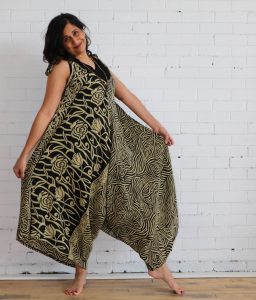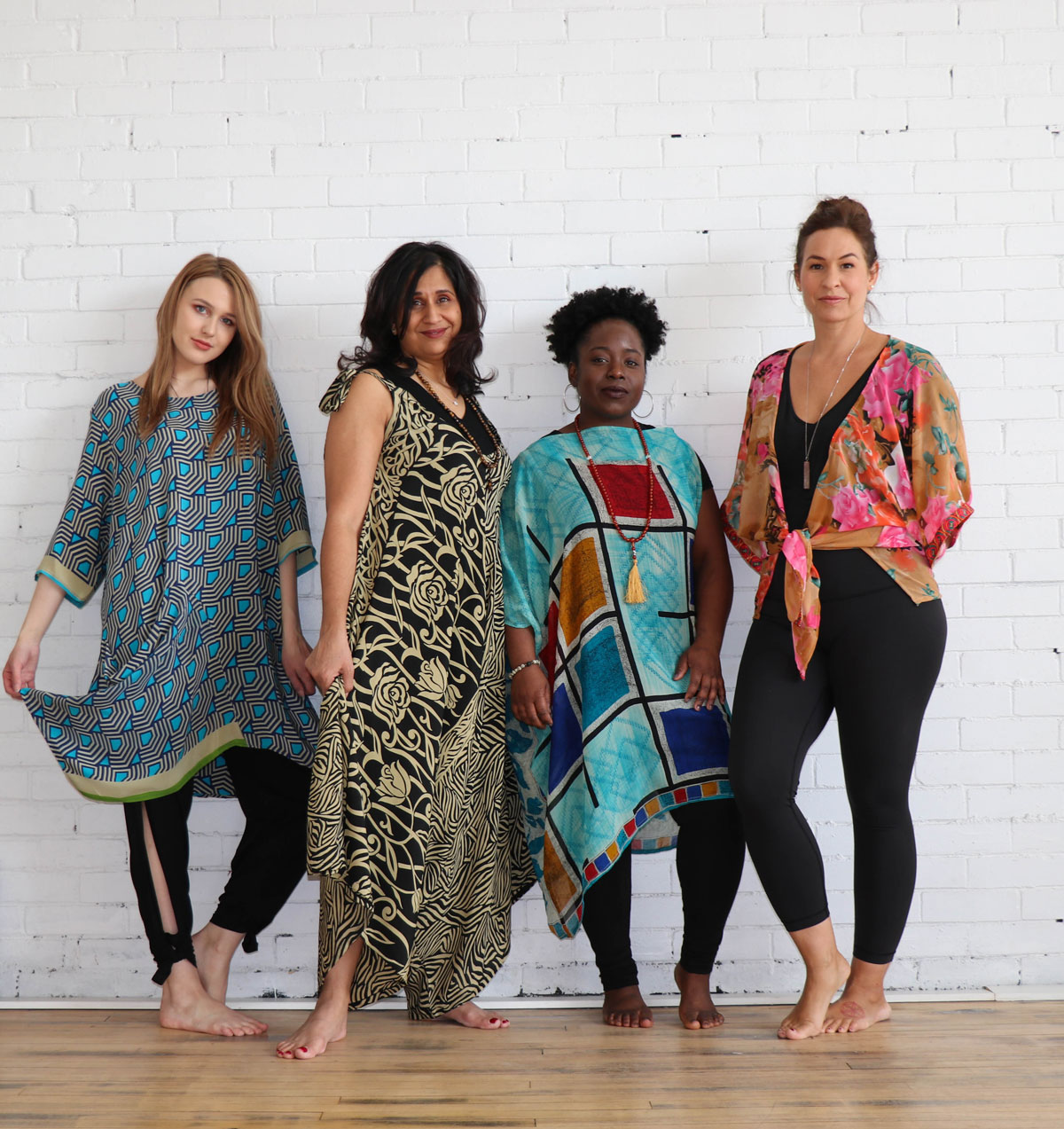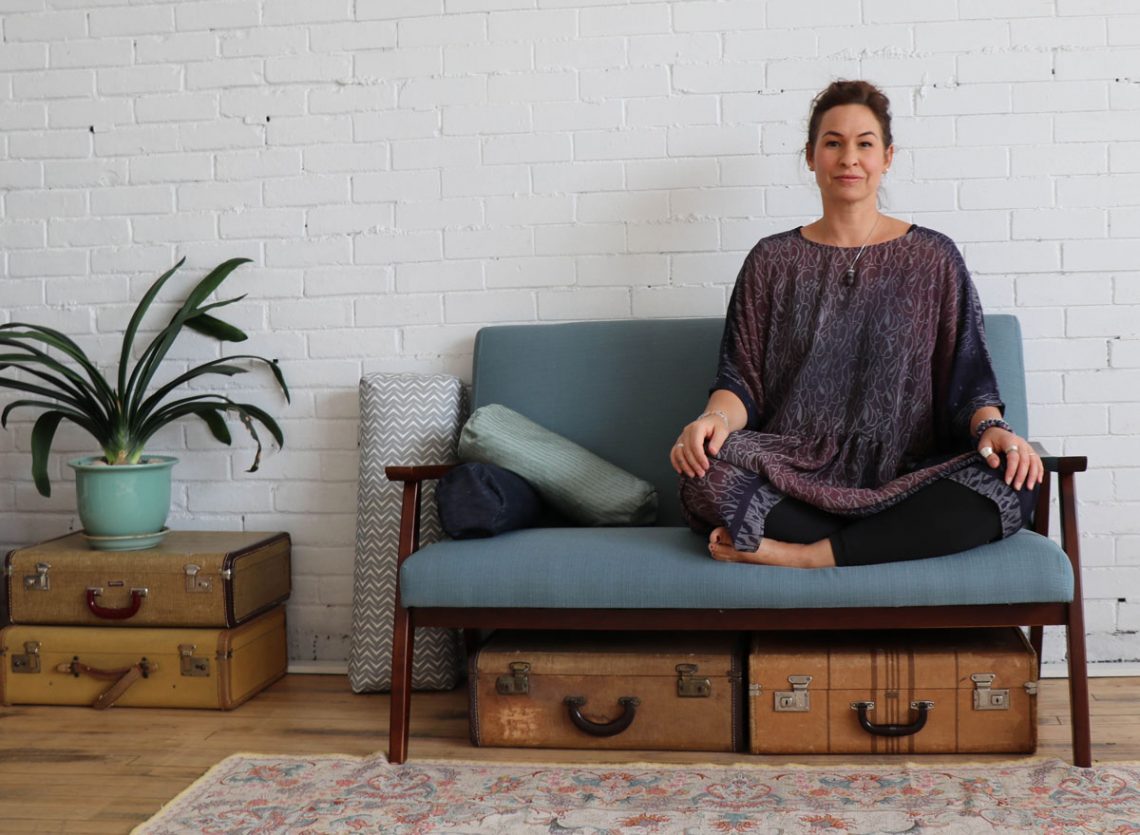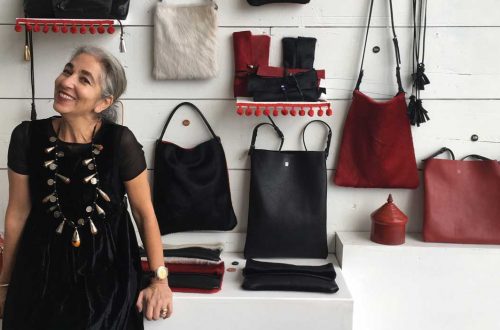
With millions of tons of textiles being produced around the world each year—and a similar amount ending up in landfills, according to the United States Environmental Protection Agency—fashion labels and industry entrants have become increasingly creative with what would be considered their “waste” fabric, though countless practices would need to be reversed to create a sustainable industry. For one Toronto-based fashion brand, a comprehensive investment in the sustainable fashion movement manifests in garments crafted from one sustainable, often overlooked material: traditional South Asian saris.
When Priya Mohan founded the brand sariKNOTsari, it was in the wake of a rich period working in the Canadian antiques market and sourcing items for her own three-story, antiques store in Burlington, Ontario. The appreciation for finding new life in discarded and vintage items followed Mohan to a sustainable lifestyle shop she later opened in Hamilton, Ontario; which paired education around upcycling and recycling with furnishings and products that would support the needs of sustainable lifestyles.
“I started looking at antiques and vintage things not from the beauty of the past, but how the creation of new things affects the future,” Mohan said. “I really started to understand the impact we were having on our planet by making these choices, and especially for someone in my generation—I’m 50 [years-old]—when we were buying things in the 1980s and 1990s, the only thing you had to think about was if you could afford it. It was such a shift in mindset for me to realize there were such huge impacts around the world and just because I don’t see them doesn’t mean that they’re not happening.”

When reflecting on methods for reutilizing household materials, one thing that came to mind was the Furoshiki gift wrapping method, which uses fabric instead of paper—and a close second thought was to apply it to saris. A whirlwind family trip to India and the discovery of a largely untapped, vintage, sari market that followed was the catalyst sariKNOTsari’s new—and vintage—offerings to the Canadian sustainable fashion market.
“I realized if I made the right connections in India, I could tap into almost like the thrift market for saris and I could control the type of saris coming in—a lot of them are polyester or not in good condition—but I found a way to track down pure silk saris,” Mohan said. “[They’re] beautiful patterns and silk is such durable fabric.”
For Mohan, the connection between flawed, vintage furniture and flawed fabric is the same, though people are likely to see one more negatively. SariKNOTsari reconceptualizes flawed, silk-fabric saris as wearable and lovable garments by repairing them with patches; another well-loved, DIY trend that has punctuated the last five decades. The ability to reconfigure something that would otherwise be discarded rests at the core of sariKNOTsari’s sustainable platform. It determines how the brand utilizes leftover fabric scraps—in different sewing techniques and accessories—and drapes fabric into forms that are made to fit any body.
This one size fits all design approach was spurred even more so by Mohan’s own realization that the western fashion industry has long courted a rigid idea of how clothing and the body should interact in time, largely ignoring the natural progression of the body to generate the sale of clothing that will be obsolete shortly after buying it.
“Your body changes as you would expect a body to change and I tell this to my customers: you wouldn’t expect a 16-year-old body to look the same as a 12-year-old body. You fully anticipate that it’s going to change and when you do your planning you think that way,” Mohan said. “But nobody in the garment industry comes right out and says ‘you’re going to buy this today, but we all know that this is not going to fit you in 10 years. We’re actually creating it fully knowing it will be obsolete.’”
As a result, the one-size styles that sariKNOTsari designs can be shared and loved across generations with the help of their durable, French-seamed construction. The brand offers pieces like scarves, versatile vests, long tunics, jackets, jumpsuits, and dresses that are crafted from crepe and sheer silk.
By handpicking fabrics in India and personally vetting the talent that works them—in this case a small team of experienced and award-winning designers and sewists in New Delhi—Mohan strives to ensure that sariKNOTsari’s production is ethical and not at risk of common issues that have plagued the fashion production industry, like child labor and unlivable wages. The entire operation, from materials to those who shape them, seeks to shift mindsets around fabric, fashion, and the body that can spur sustainable change, especially when introduced to those who have previously been unfamiliar.
“We don’t want our clothing to become obsolete for a woman; we want a woman to decide to pass it along to somebody else…I tell my staff and the people who stock our brand, ‘I know you don’t want to hear this, but even if you don’t sell the brand and even if somebody doesn’t buy that thing that you’re trying to sell them, you’ve had a chance to have a conversation now about why it’s important to upcycle or to look at craftsmanship, or why it’s important that clothing is going to fit you over time,” Mohan said.
“It’s the ripple effect of that, especially for women of my demographic who’ve never had to think about it. They’re going to make changes now that affect their kids and grandkids, and that learning that we share through conversation at a boutique, that creates change too,” Mohan added.
Text: R. Collins | GLBD writer






